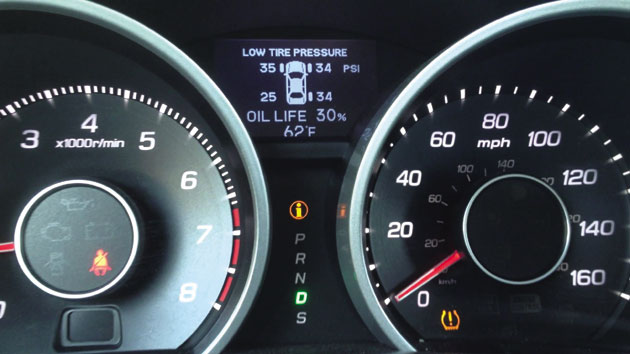
Tyre Pressure Monitoring Systems (TPMS) are electronic systems that monitor tyre pressure and temperature and can inform drivers of low pressure or sudden deflation of tyres. The systems transmit data to the vehicle’s ECU which is depicted via a pictogram display, voice activation or a simple warning light within the vehicle.
Benefits to the motorist include improved fuel efficiency, decreased tyre wear, improved driver safety and vehicle handling.

There are two types of TPMS:
1. Indirect system
This uses existing sensors of the ABS/ESP by identifying the tyre pressure via tyre speed/wheel rotation.
2. Direct fit system
This is when a pressure sensor is installed directly in the valve of each tyre. Systems use a radio frequency to transmit the data to the ECU. In comparison to direct TPMS, the indirect system can be imprecise as there is no indication of the exact pressure lost, temperature measurement or which tyre is deflated. Convenience is also lost through the fact there is no measurement of tyre pressure when the vehicle is stationary. On the flip side, because there are no sensors in the tyre, no extra costs are incurred when changing tyres.
When compared with indirect TPMS, the direct fit system benefits from very precise data collection as well as additional functions, such as tyre position detection, measurement of loss of pressure and monitoring of the spare wheel. Additional costs for tyre maintenance, however, are encountered.
Why is it needed?
EU legislation that came into effect on 1st November 2014 stated that all new models produced after 2012 must be equipped with tyre pressure monitors. This law also means that it is compulsory to have TPMS present on a vehicle in order to pass the MOT test.
The aim of the new regulations is to increase driver safety, reduce fuel consumption/CO2 emissions and decrease premature wear of tyres.
TPMS scan tools
TPMS diagnostic tools are a vital part of any TPMS operation. These tools can detect if there is a sensor fitted or if there is a signal from the sensor. They can also diagnose a faulty sensor and register and retrain new sensors to the vehicle’s ECU.
The workshop opportunity
It is estimated that by the end of 2015 there will be approx. 10 million vehicles fitted with TPMS and there will be a natural requirement to maintain these systems. The EU regulation means there is significant business opportunities available to garages and workshops to maintain, repair, service and re-programme TPMS sensors.









